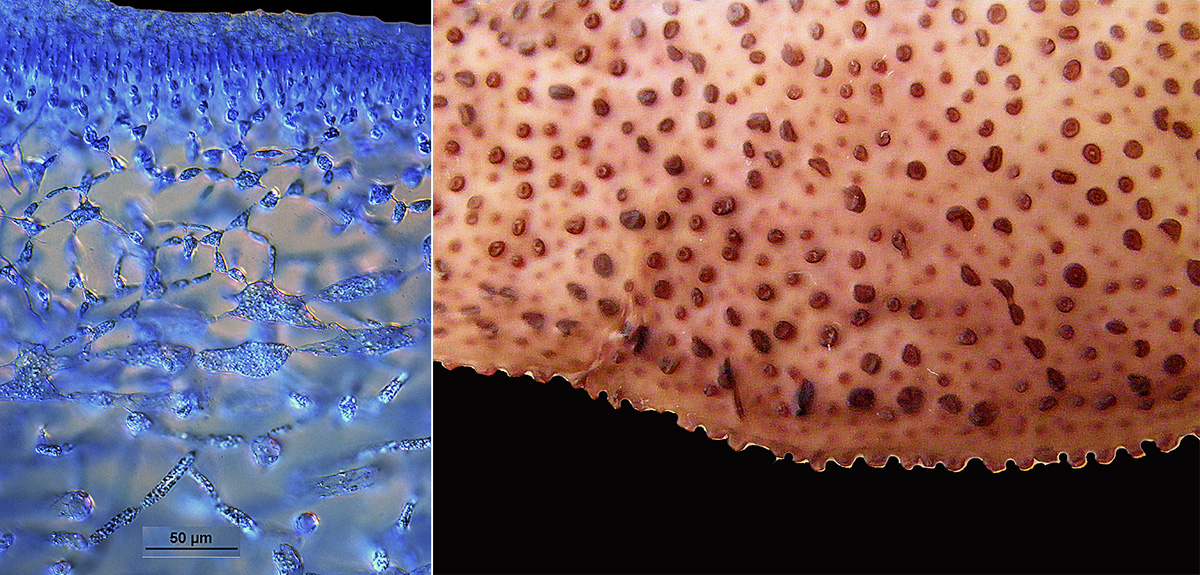
State Herbarium staff member Chelsea Novice holding a specimen of Sarcothalia radula. Photo: B. Baldock.
DEWNR‘s last Park of the Month for 2016 is Canunda National Park on the South Australia’s south-eastern shore. Fittingly, the State Herbarium has chosen an alga, Sarcothalia radula (Esper) Edyvane & Womersley, as Plant* of the Month (even though technically speaking, red algae are not plants).
[* = and other organisms traditionally studied by botanists]
Bigger and bolder at Canunda
The South East of South Australia − including Canunda N.P. shores − is rich in algal species, particularly red algae. An upwelling of cold, nutrient-rich bottom waters occurs in summer, producing both a large diversity and large sizes of some algae (see Butler et al. 2002, 900kb PDF). For example, the Giant Kelp (Macrocystis pyrifera) and Bull Kelp (Durvillaea potatorum), are common big browns along rocky parts of the Canunda N.P.
But the reds can be big, too.
Sarcothalia radula is a bright-red-purple alga looking like a filmy, plastic sheet that reaches 1½ m in height in calm waters. It can be paper-thin, and not surprisingly gets damaged, with holes appearing in the blade. Remarkably for such a large plant, this alga is fixed to rocks at depths of 1-10 m by the tiniest of holdfasts. How it withstands being swept from its substrate by the surge of water in its habitat is difficult to imagine.
Smaller plants may be lance-shaped, or even appear slashed into narrow strips, possibly a response to depth of water, light and ferocity of waves.
A descriptive common name, giant pimply-sheets, coined in the Algae Revealed fact-sheet (960kb PDF) on eFloraSA, highlights the strange texture present when a female plant is fertile. Thousands of small, pimply (papillose) bumps on very short stalks are scattered on the surfaces and edges of blades. The common name found on Algae Base, is tongue weed, but fertile female blades must resemble pretty furry tongues when fertile! In fact, the specific epithet radula, Latin for “rasp” or “scraper” more aptly describes them.

Sarcothalia radula: cross-section through blade (left) and surface view of the “pimply” female blade margin (right). Photos: B. Baldock.
Internally, the microscopic structure of blade cores (image above) shows many-armed cells separated by an extraordinary amount of space. Surface layers consist of compact, outward-facing chains of small cells.
We have some 60 specimens of Sarcothalia radula in the collection of the State Herbarium of South Australia. Globally, the species is found in cold waters across the southern hemisphere.
Perhaps after local storms you may come across this impressive red washed up on Canunda beaches.
Contributed by Carolyn Ricci and Bob Baldock, Phycology Unit, State Herbarium.

